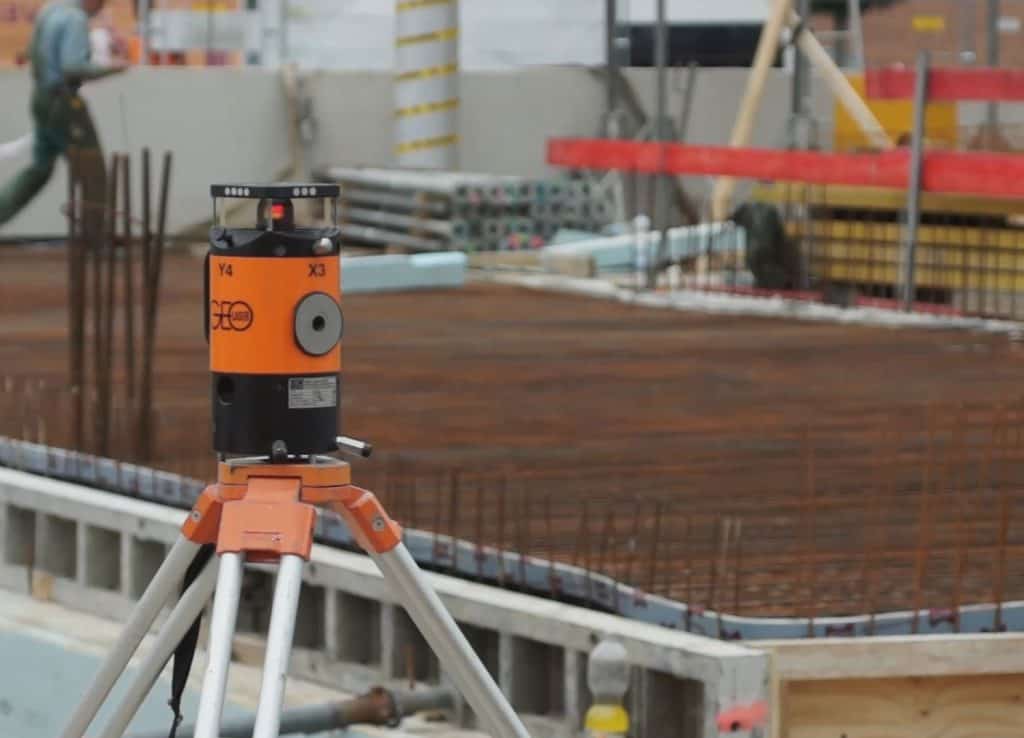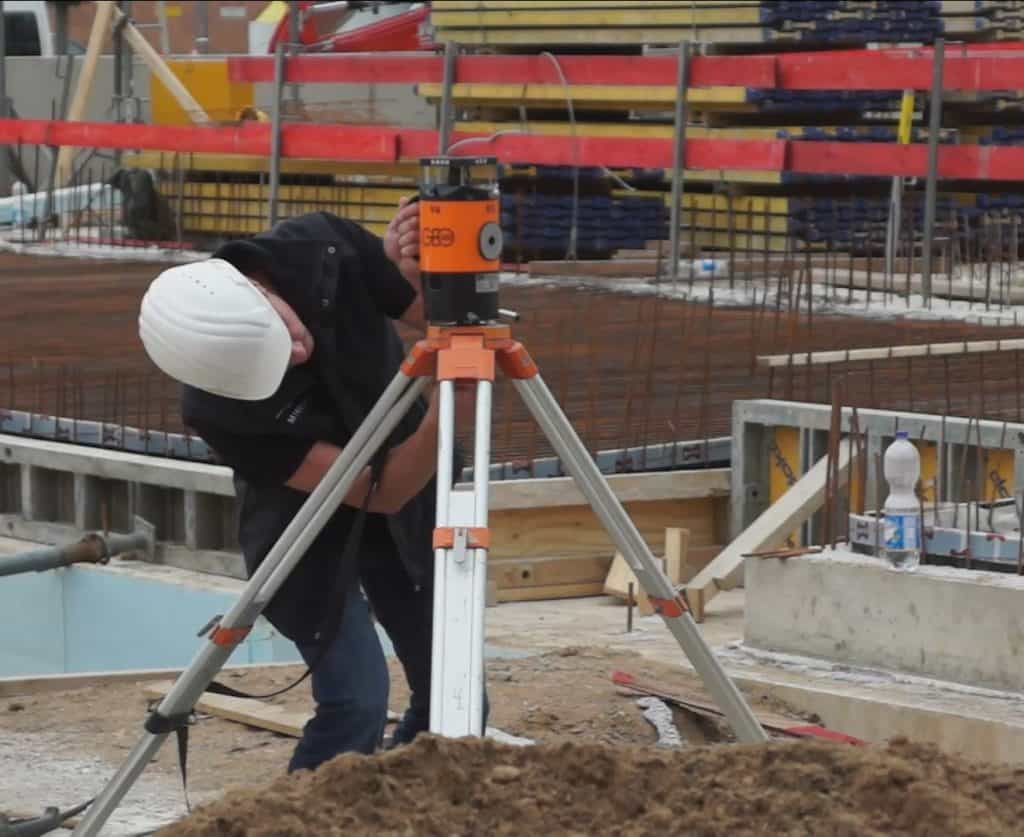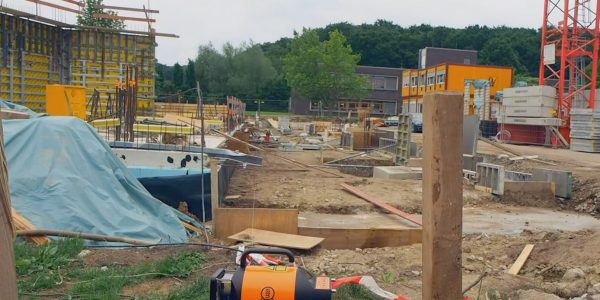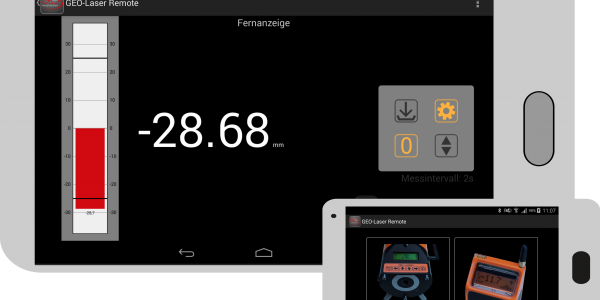Transferring heights. Transferring heights or levelling different substrates is a daily task on the job site. Spirit levels, hose levels or classic levels are often used for this. In the meantime, however, it has long since become common practice to transmit heights in an uncomplicated manner using a rotary laser. Regardless whether we are talking about cutting checks or levelling of a concrete floor, laser measurement technology makes it very easy to achieve high accuracy in the shortest possible time with just one person.
This article explains the correct procedure step by step from setting up of the devices to the perfect result.
Video: Transferring heights with a rotary laser – Levelling with a rotary laser – Laser receivers
Do you already know our Youtube channel? Why not have a look there some time!
Solution
1. Setting up the rotary laser
Heights can be transmitted very easily with a rotary laser. For this, the laser device is set up over any point next to the surface to be measured, e.g. on a tripod. Since all GEO lasers have automatic levelling, the device only needs to be aligned roughly. It must further be ensured that the device always has a clear view of the complete surface. The rotary laser is then switched on and generates a light surface in space by rotation of the laser beam, which serves as a reference plane for the upcoming measuring tasks.
2. Setting up the laser receiver
Before measurement, the laser receiver is mounted on the measuring rod. The required reference height is then set. The reference height designates a point to which further height measurements refer. The measuring rod is set so that the zero point of the measuring rod represents the reference height. The laser receiver can then be moved by any height (+/-) to achieve the desired target height. The shift is always in the opposite direction to the desired change in height. Example: In order for the area to be measured later on to be 20 cm above the reference height, the laser receiver must be moved downwards by 20 cm.
The preparations are completed by mounting the concreting plate. Tip: Coat the concreting plate with a release agent before use so that the concrete does not stick to it.
3. Practical execution – Transferring heights and levelling ground
To level a concrete floor with a rotary laser, the height of the liquid concrete is checked and adjusted continuously. For this, the area to be measured is measured with the measuring instrument (measuring rod on which the concreting plate and laser receiver are mounted).
It is important that the rod is always perpendicular to the ground. The concreting plate at the lower end supports you in this. The laser plane can be detected by raising and lowering the measuring rod. The laser receiver indicates the correct height by means of visual and audible signals.
Heights can be transmitted quickly and easily in the same way. The light surface generated in space is detected by a laser receiver. By means of a predefined offset, any heights, even over several 100 metres, can be easily transmitted.
4. Selection of equipment
The rotary laser should be electronically self-levelling over 2 axes and have sufficient accuracy. The GEO rotary laser RL-70L is used in the video. It has an output power in laser class 2 and can therefore be used without any problems even without a laser safety officer. For longer ranges, it is available as variant RL-71L with higher power in laser class 3R. Read more
The LE-96 is ideal as laser receiver. It receives a rotating laser beam and indicates its position relative to the light surface by way of two LEDs and various signal tones. Thanks to its robust design, the LE-96 is the ideal companion for tough everyday use on construction sites. Its angular and rectilinear design is ideal for marking height checks directly without any additional aids. Due to the short reaction time of the laser receiver, it is ideally suited for height transmission or levelling with a rotary laser. Read more











